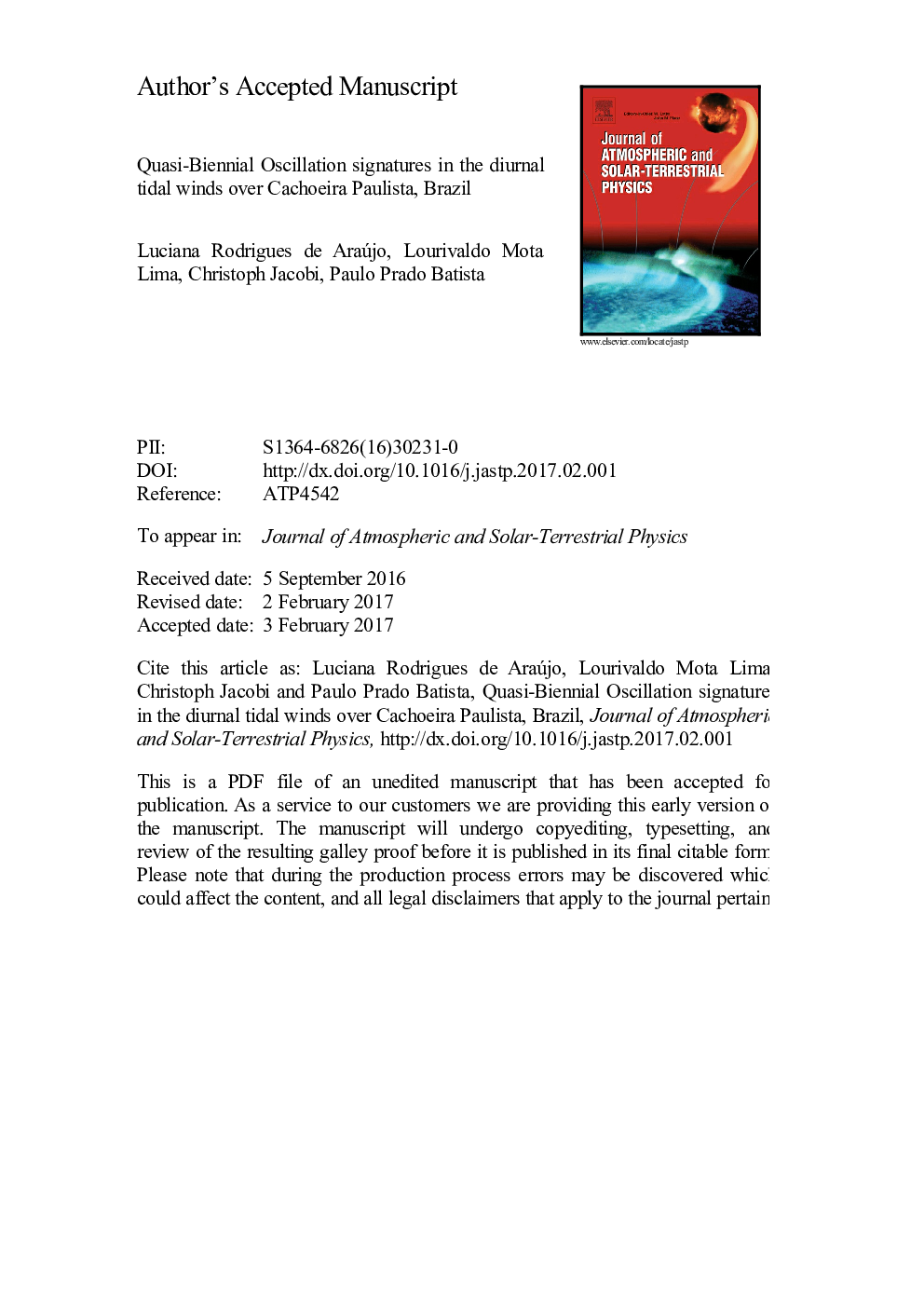| Article ID | Journal | Published Year | Pages | File Type |
|---|---|---|---|---|
| 5487532 | Journal of Atmospheric and Solar-Terrestrial Physics | 2017 | 29 Pages |
Abstract
Mesosphere/lower thermosphere winds obtained by meteor radar over Cachoeira Paulista (22.7° S, 45.0° W), Brazil, have been used to investigate the interannual variability of the diurnal tidal (DT) wind amplitude. The monthly DT displays year to year variations and their amplitudes are strongest during the westerly phase of the quasi-biennial oscillation (QBO) at the 30 hPa level. This can be observed in all seasons in the meridional component, whilst in the zonal component the signal is clearer during austral autumn, when the diurnal tide is strongest in this latitude. The spectrum obtained from the deseasonalized amplitudes shows a peak near 26 months in the meridional component, which can be associated to the stratospheric QBO. The QBO modulation of the DT amplitude shows a quasi-decadal variation, and it is stronger during the maximum of the solar cycle.
Keywords
Related Topics
Physical Sciences and Engineering
Earth and Planetary Sciences
Geophysics
Authors
Luciana Rodrigues de Araújo, Lourivaldo Mota Lima, Christoph Jacobi, Paulo Prado Batista,
